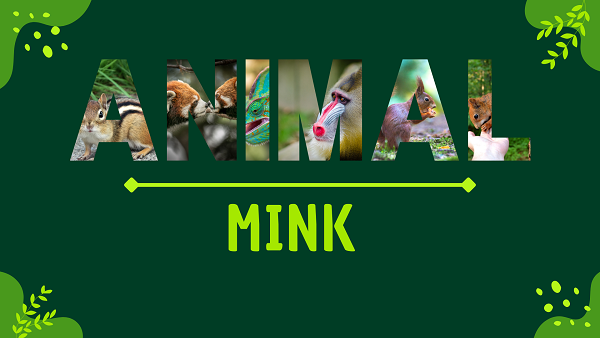Mink | Facts, Diet, Habitat & Pictures
Home » Animals » Mink | Facts, Diet, Habitat & Pictures
Mink Overview
Appearance
Mink is a sleek and agile mammal with long, slender bodies. They have a luxurious fur coat that varies in color, commonly brown or dark gray, with a lighter underbelly.
Their short legs and webbed feet make them adept swimmers. Minks possess small, rounded ears and sharp, pointed snouts. Their bushy tails, often around one-third of their body length, help them maintain balance in their aquatic habitat.
Origins And Evolution
Minks, scientifically known as Mustela vison, are members of the Mustelidae family, which includes weasels, otters, and ferrets. They have a long evolutionary history dating back to the Miocene epoch. Minks are native to North America and are particularly adapted to aquatic environments, which influenced their evolution.
Their ancestors likely inhabited terrestrial habitats, but over time, minks developed adaptations for a semi-aquatic lifestyle. This includes webbed feet and waterproof fur, making them skilled hunters in aquatic ecosystems.
Behavior and Lifestyle
Minks are carnivorous and highly adaptable predators with a primarily solitary lifestyle. They are skilled swimmers and spend a significant portion of their time in and around aquatic habitats, hunting for prey like fish, amphibians, and aquatic birds. Minks are crepuscular, meaning they are most active during dawn and dusk.
They have well-defined territories and are known for their agility and stealth when stalking prey. Minks are also territorial and communicate with scent marking to establish and defend their home ranges.
Mink Scientific Classification
- Kingdom: Animalia
- Phylum: Chordata
- Class: Mammalia
- Order: Carnivora
- Family: Mustelidae
- Genus: Neovison (formerly Mustela)
- Species: Neovison vison
Mink Locations
Minks can be found in various locations across North America, Europe, and Asia.
Fast Facts
- Name: American Mink
- Scientific Name: Neovison vison
- Habitat: Waterfront Areas
- Diet: Aquatic Prey
- Physical Features: Sleek Fur
- Nocturnal: Mostly Nocturnal
- Solitary: Largely Solitary
- Unique Order: Mustelidae Family
- Lifespan: 3-4 Years
- Conservation Status: Least Concern
- Fun Facts: Semi-Aquatic Hunter
Physical Characteristics
- Color: Rich Brown
- Skin Type: Water-Repellent Fur
- Top Speed: Agile Swimmer
- Lifespan: 3-4 Years
- Weight: Lightweight Body
- Length: Slender Form
- Age of Sexual Maturity: 1 Year
- Age of Weaning: 5-6 Weeks
Mink FAQs
What is a mink?
A mink is a carnivorous mammal famous for its sleek appearance and valuable fur.
Where are minks found in the wild?
Minks are found in various regions across North America, Europe, and Asia.
Are minks related to other animals?
Yes, minks are part of the Mustelidae family, which includes weasels, otters, and badgers.
What do minks eat?
Minks are carnivores and primarily feed on fish, amphibians, birds, and small mammals.
Are minks good swimmers?
Yes, minks are excellent swimmers, thanks to their webbed feet and waterproof fur.
Related:
- Tarantula
- Mackerel
- Mackerel
- Sea Stars
- Bird
- Amphibians
- Vertebrates
- Sand Dollars
- Barnacles
- Scallop
- Brittle stars
- Tilapia
- Carp
- Krill
- Catfish
- Grouper
- Calm
- Yak
- Yucatan Brown Brocket
- White-tailed Deer
- Uakari
- Utahraptor (Dinosaur)
- Qinghai Lake Naked Carp
- Qilian Shrew
- Qinling Panda
- Qacha’s Nek long-fingered Frog
- Red Fox
- Red Panda
- Rockhopper Penguin
- Salamander
- Snail
- Storks


